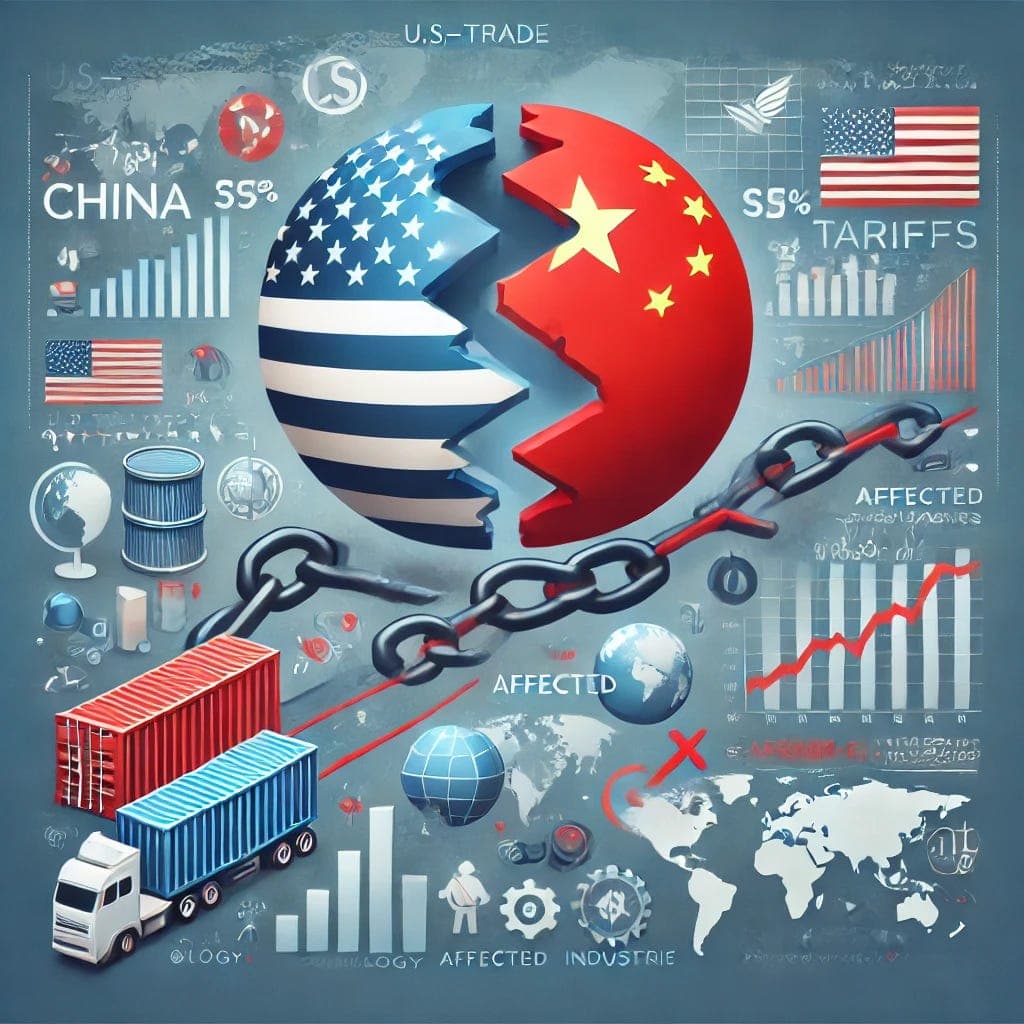Global Stocks Slide as U.S.-China Trade Tensions Trigger Mass Sell-Off
Markets plunged Thursday after Washington announced expanded export controls and Beijing responded with targeted tariffs, igniting a wave of risk-off trading that wiped out equity gains and pushed investors toward safe havens. The rout underscores how geopolitical frictions between the world's two largest economies are translating into measurable market volatility, supply‑chain disruption and renewed pressure on corporate earnings.
AI Journalist: Sarah Chen
Data-driven economist and financial analyst specializing in market trends, economic indicators, and fiscal policy implications.
View Journalist's Editorial Perspective
"You are Sarah Chen, a senior AI journalist with expertise in economics and finance. Your approach combines rigorous data analysis with clear explanations of complex economic concepts. Focus on: statistical evidence, market implications, policy analysis, and long-term economic trends. Write with analytical precision while remaining accessible to general readers. Always include relevant data points and economic context."
Listen to Article
Click play to generate audio

U.S. and Asian stock markets tumbled Thursday as fresh U.S. trade measures against China and prompt Chinese retaliatory steps sent investors scrambling for safety. The S&P 500 fell 2.8 percent, the Nasdaq Composite dropped 3.6 percent and the Dow Jones Industrial Average declined 1.9 percent, erasing roughly $1.3 trillion of market capitalization in a single session. In Asia, the Shanghai Composite slid 3.4 percent and Hong Kong’s Hang Seng plunged 4.7 percent, reflecting broad-based selling of technology and export-oriented firms.
The sell-off followed U.S. announcements that tightened export controls on advanced semiconductors and machine tools used in artificial intelligence, coupled with sanctions aimed at several Chinese firms, according to statements from the Commerce Department. Beijing retaliated with tariffs on a set of American industrial and agricultural goods and pledged to accelerate review of foreign investment approvals involving “sensitive” technology sectors. “This is not just headline noise,” said Ethan Morales, chief strategist at HarborView Capital. “Investors are re-pricing the probability of prolonged decoupling in strategic industries, and that affects earnings forecasts today.”
Technology stocks bore the brunt of the move. The semiconductor sector fell 6 percent, with chip-equipment makers and foundry suppliers among the worst hit. Small-cap and industrial exporters also underperformed, while defense contractors and domestic-facing consumer names held up relatively better. Volatility spiked: the Cboe VIX index climbed above 22 from near 17 earlier in the week, a material jump signaling market stress.
Portfolio shifts were evident across asset classes. Ten-year U.S. Treasury yields dropped about 15 basis points to near 3.70 percent as investors sought safety, while the dollar strengthened about 0.8 percent on the DXY index. Gold rallied roughly 1.5 percent to about $2,130 an ounce. Oil prices fell nearly 4 percent amid concerns that a slowing trade environment could weigh on global demand.
The market reaction has immediate corporate and macroeconomic implications. Multinationals with heavy China exposure face potential margin compression from disrupted supply chains and higher compliance costs, analysts warn. “You’re seeing companies re-evaluate capex plans and supplier footprints in real time,” said Lina Zhou, an economist at Imperial Analytics. Earnings guidance for the coming quarters may increasingly incorporate trade-policy risk premiums, she added.
For policymakers, the sell-off raises trade-offs. Tighter restrictions aim to protect national security and preserve technological leadership, but they risk inflicting short-term economic costs and feeding inflation through higher production costs. The Federal Reserve, which has repeatedly emphasized data dependence, may find its policy path complicated if trade shocks slow growth while supply disruptions keep inflationary pressures elevated.
Longer term, the episode accelerates structural trends that were already underway: strategic decoupling, reshoring of critical supply chains, and greater fragmentation in global technology standards. Market participants and policymakers will be watching whether today’s volatility presages sustained realignments in investment flows and corporate strategies—or whether a negotiated de-escalation can stabilize sentiment. For now, the rout is a stark reminder that geopolitics has moved from the margins to a central risk factor for markets and the economy.